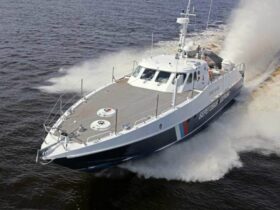«Intellectual buildings»
On an example, you can easily explain how to calculate the cost of an asuz for a building. The speed center in Krylatsky was completely equipped with a control and control system so that the palace could function normally at the modern level. The approximate cost of systems was 1 % of the total cost of the building itself. It is calculated according to the percentage formula: (100 — 10 — 1), where 100 is the cost of a “box”, 10 is the price of all engineering and life support systems, 1 is the amount for automation. This is a rather approximate calculation, but here the ratio of the engineering component to automation costs is preserved. If the first increases, then the second next also begins to grow. But if you want to increase the area of the building, then the cost of automation, on the contrary, will decrease. In the end, it all depends only on the customer himself, more precisely on the concept he has chosen. But still, asuz is more suitable for «intellectual buildings».
In such projects, the most investors are interested in the payback periods of technologies and further cash receipts due to savings. But if the asuz for a particular project is mandatory, then such an assessment will be incorrect on your part. This question more worries those who wanted to invest their money in something worthwhile, then such calculations should be carried out first. At the moment, the payback period is about 5 — 7 years. But sometimes you can hear tempting sentences that will pay off in 2 — 3 years. The parameter for which they determine whether to build an “intellectual building” is called an annual percentage of the effectiveness of investments. How to calculate it? We take the total amount of energy saving, labor costs and all components for the service of engineering systems of the building. Asuz provides saving during operation for a period that is more than the payback period. From the amount received, we subtract all the costs of developing the system and its creation. We divide the resulting number by the number of years and the entire cost of automation, t. e. We lead to relative percentage of annual. If the final result is within 10 — 20 %, then it is considered the average.













Оставить коммент.